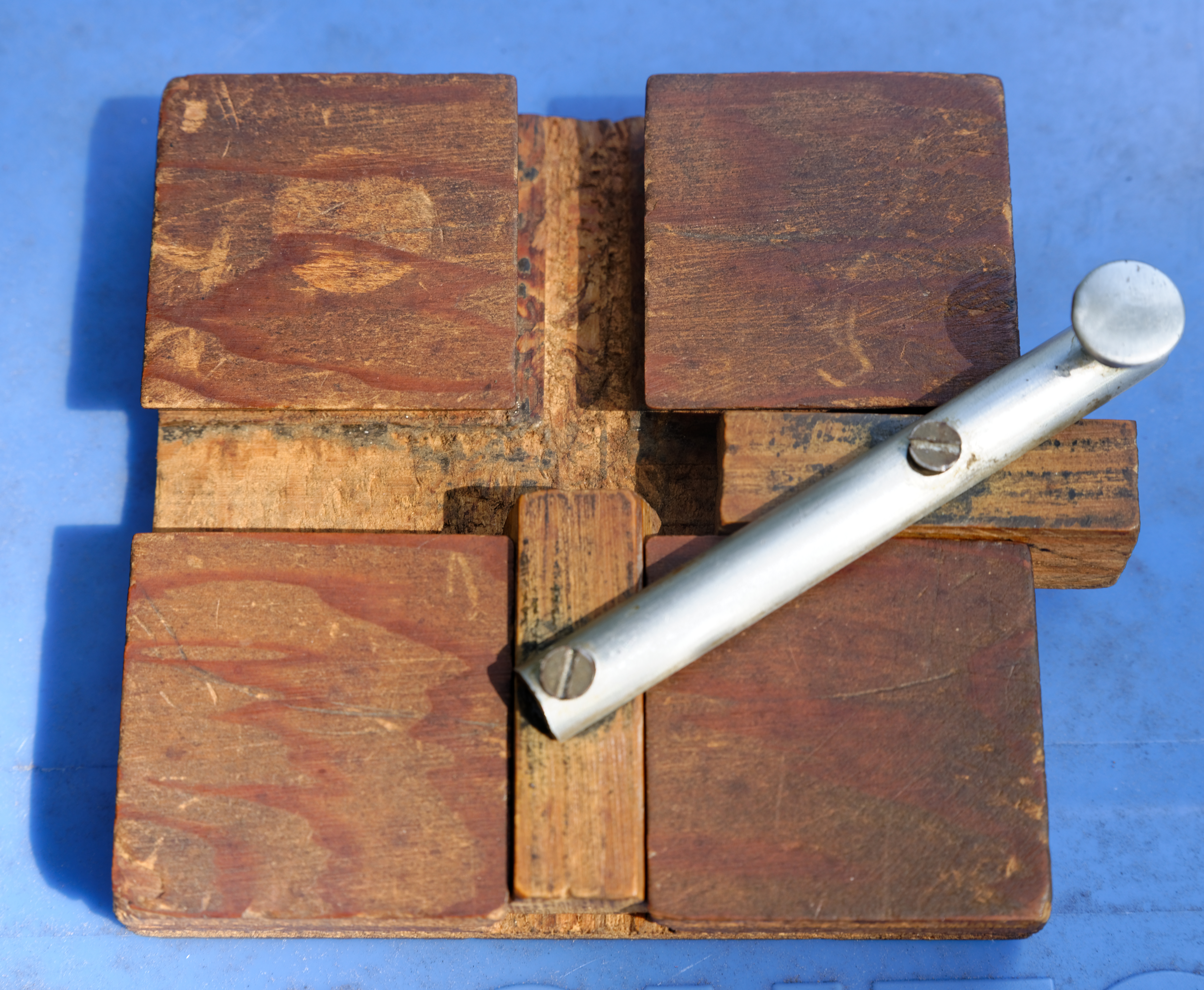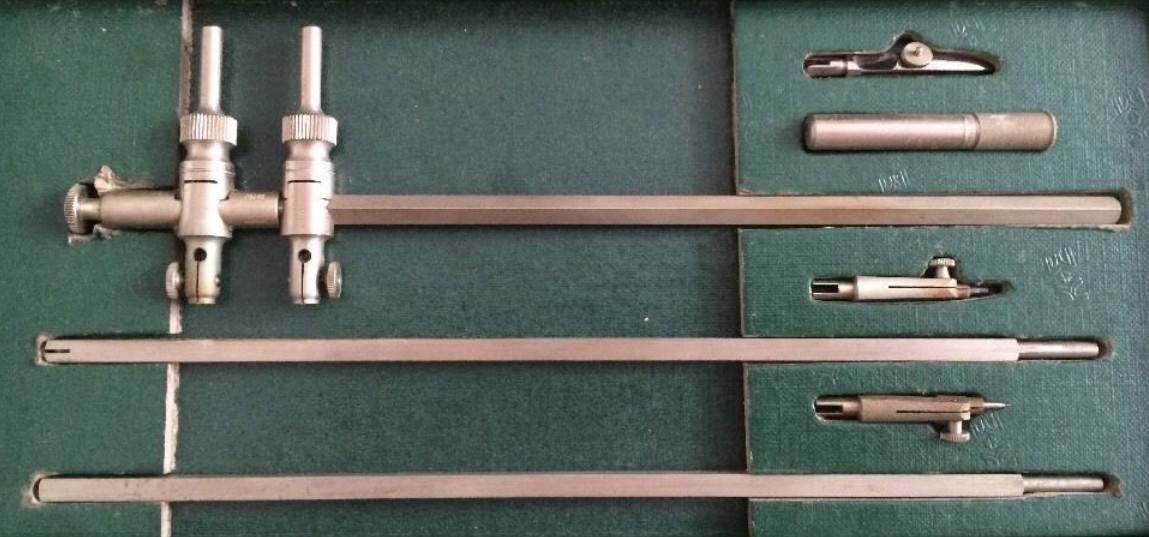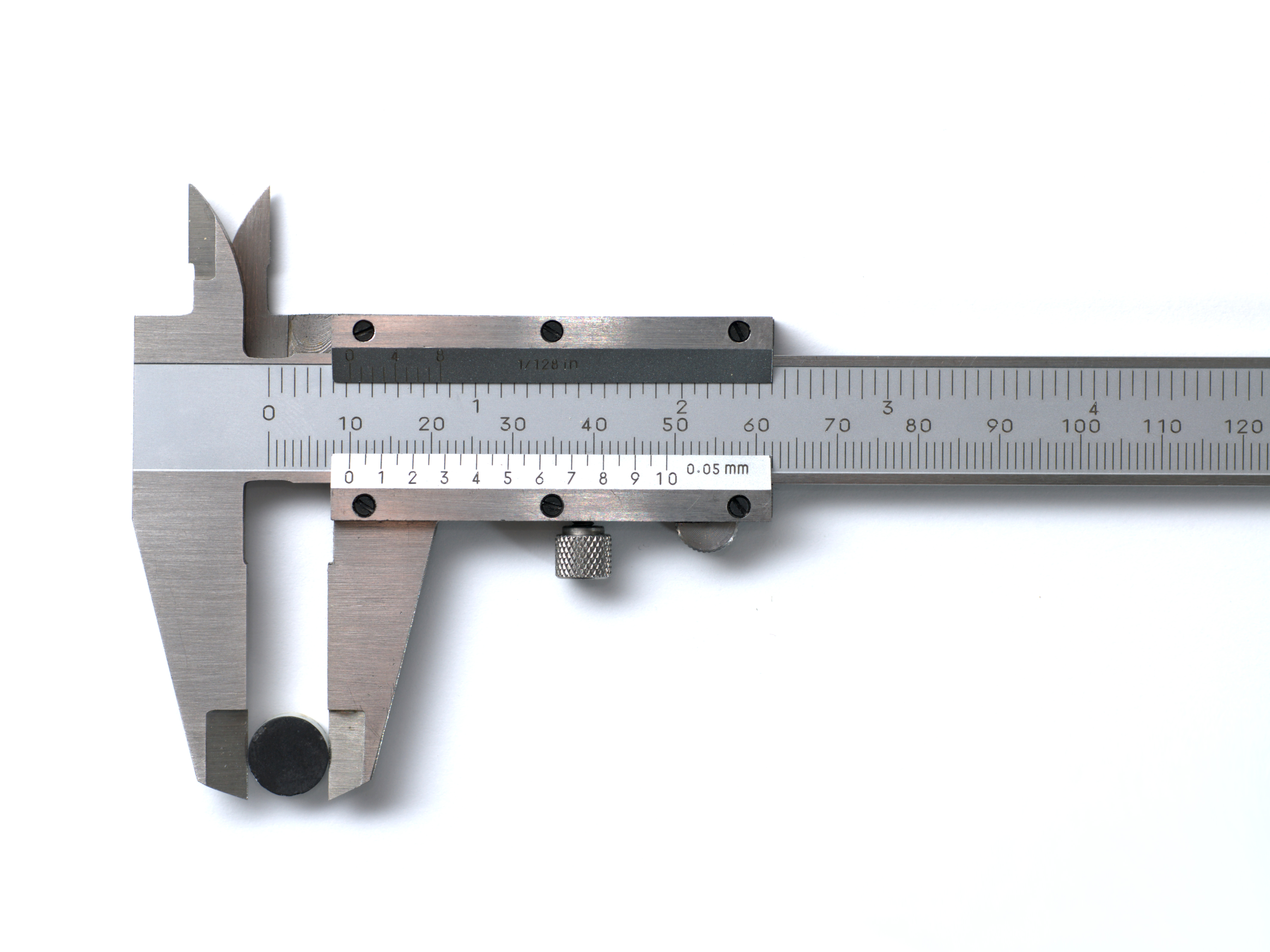|
Compass (drawing Tool)
A compass, also commonly known as a pair of compasses, is a technical drawing instrument that can be used for inscribing circles or arcs. As dividers, it can also be used as a tool to mark out distances, in particular, on maps. Compasses can be used for mathematics, drafting, navigation and other purposes. Prior to computerization, compasses and other tools for manual drafting were often packaged as a set with interchangeable parts. By the mid-twentieth century, circle templates supplemented the use of compasses. Today those facilities are more often provided by computer-aided design programs, so the physical tools serve mainly a didactic purpose in teaching geometry, technical drawing, etc. Construction and parts Compasses are usually made of metal or plastic, and consist of two "legs" connected by a hinge which can be adjusted to allow changing of the radius of the circle drawn. Typically one leg has a spike at its end for anchoring, and the other leg holds a drawing ... [...More Info...] [...Related Items...] OR: [Wikipedia] [Google] [Baidu] |
Zirkel
Zirkel may refer to: * Zirkel (Studentenverbindung), a symbol used in European student societies * Dorsum Zirkel, a wrinkle ridge in Mare Imbrium on the Moon * Mount Zirkel, in the Rocky Mountains of Colorado * USS Zirkel (ID-3407), USS ''Zirkel'' (ID-3407), a cargo ship that served in the United States Navy from 1918 to 1919 * Albert Zirkel (1885–?), American wrestler who competed in the 1904 Summer Olympics * Ferdinand Zirkel (1838–1912), German geologist and petrographer {{disambiguation, surname German-language surnames Occupational surnames ... [...More Info...] [...Related Items...] OR: [Wikipedia] [Google] [Baidu] |
Nib (pen)
A nib is the part of a quill, dip pen, fountain pen, ball point, or stylus which comes into contact with the writing surface in order to deposit ink. Different types of nibs vary in their purpose, shape and size, as well as the material from which they are made. History Quill The quill replaced the reed pen across Europe by the Early Middle Ages and remained the main writing tool of the West for nearly a thousand years until the 17th century. Quills are fashioned by cutting a nib into the end of a feather obtained from a fairly large bird, such as a goose, traditionally from its left wing. A quill has the advantage of being more durable and more flexible than a reed pen, and it can also retain ink in the hollow shaft of the feather, known as the calamus, allowing more writing time between ink dippings. The quill was in common use until the early 19th century and the advent of the metal nib. For business purposes, the quill was fairly quickly overtaken; however, it remains popul ... [...More Info...] [...Related Items...] OR: [Wikipedia] [Google] [Baidu] |
Nuvola Apps Designer
Nuvola is a free software icon set under the GNU LGPL 2.1 license, created by David Vignoni. Originally created for desktop environments like KDE and GNOME, it is also available in packages for Windows and Mac. The final version, 1.0, contains almost 600 icons. The default set is in the PNG graphics format; an SVG version is also available. The application icons, in particular, colourfully represent a wide variety of commonplace and easily recognised objects. Uses Besides KDE and GNOME, ''Nuvola'' is used by the Pidgin instant messaging client, the Amarok media player and the KeePass password manager. Nuvola is the default icon set on the OpenLab GNU/Linux distribution. It is also used for many purposes on Wikimedia Foundation projects. Examples of icons File:Nuvola apps evolution.png File:Nuvola apps core.svg File:Nuvola apps colors.png File:Nuvola-fs-blockdev.svg File:Nuvola devices usbpendrive mount.png File:Nuvola devices cdrom mount.png File:Nuvola devices print ... [...More Info...] [...Related Items...] OR: [Wikipedia] [Google] [Baidu] |
Musée D'histoire Des Sciences De La Ville De Genève
The ''Musée d'histoire des sciences de la Ville de Genève'' (Museum of the History of Science of the City of Geneva) is a small museum in Switzerland dedicated to the history of science. Location The museum is located in the ''Villa Bartholoni'', designed by Félix-Emmanuel Callet, built in 1830 as a summer residence for Parisian bankers, Constant and Jean-François Bartholoni and extensively restored between 1985 and 1992. It is situated in the park ''La Perle du Lac'', overlooking Lake Geneva, adjacent to the Conservatory and Botanical Garden of the City of Geneva. Both the Villa and the museum itself are listed in the Swiss Inventory of Cultural Property of National and Regional Significance. Access The Museum is open daily from 10am to 5pm, except for 25 December and 1 January and admission is free. The museum receives over 250,000 visitors per year. History The museum was established in 1964 by the enthusiasm of ' (the Museum and review of the History of Science Associ ... [...More Info...] [...Related Items...] OR: [Wikipedia] [Google] [Baidu] |
Trammel Of Archimedes
An ellipsograph is a mechanism that generates the shape of an ellipse. One common form of ellipsograph is known as the trammel of Archimedes. () It consists of two shuttles which are confined to perpendicular channels or rails and a rod which is attached to the shuttles by pivots at adjustable positions along the rod. As the shuttles move back and forth, each along its channel, all points on the rod move in elliptical paths. The motion of the rod is termed elliptical motion. The semi-axes ''a'' and ''b'' of the ellipses have lengths equal to the distances from the point on the rod to each of the two pivots. The straight lines described by the pivots are special cases of an ellipse, where the length of one axis is twice the distance between the pivots and that of the other is zero. All points on a circle with a diameter defined by the two pivots reciprocate in such straight lines. This circle corresponds to the smaller circle in a Tusi couple. The point midway between the pivots ... [...More Info...] [...Related Items...] OR: [Wikipedia] [Google] [Baidu] |
Reduction Compass
The reduction compass or proportional dividers is a geometry tool with asymmetric-length branches to allow performing homothetic transformations, reproducing a pattern while enlarging or reducing its size and conserving angles. It was invented by Fabrizio Mordente before 1567. Use and principle The reduction compass is made of two branches, with two points each. Several types exist, including the following: * simple reduction compass: the pivot is fixed, and the enlargement factor is determined by the length difference between the small and long end of the branches; * mobile-headed reduction compass: the pivot is mounted on a slide, and its position determines the enlargement factor. File:Reduction compass-MHS 1880-IMG 3829-gradient.jpg, Simple reduction compass on display at the Musée d'histoire des sciences de la Ville de Genève, Musée d'Histoire des Sciences de la ville de Genève. File:Reduction compass-MHS 1914-IMG 3834-gradient.jpg, Sliding-pivot reduction compass by ... [...More Info...] [...Related Items...] OR: [Wikipedia] [Google] [Baidu] |
Beam Compass
A beam compass is a compass with a beam and sliding sockets or cursors for drawing and dividing circles larger than those made by a regular pair of compasses. The instrument can be as a whole, or made on the spot with individual sockets (called trammel points) and any suitable beam. Draftsman's beam compass A draftsman's beam compass consists of a set of points and holders, mounted on a plated brass, aluminum, or German 'silver' rod. One end is generally locked down at the end of the rod, while the other has both rough and fine adjustments, though some are opposite in construction. The locked tip holder consists of a needle, for the centre of the radius, and the other holds either a lead clutch, or an inking nib. There are older variants which use a wooden beam. Another similar type is a Machinist or Engineers beam compass, which uses scribing points only, similar to ones used by woodworkers, except that its fine adjustment is generally more refined. These beam compasses can b ... [...More Info...] [...Related Items...] OR: [Wikipedia] [Google] [Baidu] |
Euclid's Elements
The ''Elements'' ( ) is a mathematics, mathematical treatise written 300 BC by the Ancient Greek mathematics, Ancient Greek mathematician Euclid. ''Elements'' is the oldest extant large-scale deductive treatment of mathematics. Drawing on the works of earlier mathematicians such as Hippocrates of Chios, Eudoxus of Cnidus and Theaetetus (mathematician), Theaetetus, the ''Elements'' is a collection in 13 books of definitions, postulates, propositions and mathematical proofs that covers plane and solid Euclidean geometry, elementary number theory, and Commensurability (mathematics), incommensurable lines. These include Pythagorean theorem, Thales' theorem, the Euclidean algorithm for greatest common divisors, Euclid's theorem that there are infinitely many prime numbers, and the Compass-and-straightedge construction, construction of regular polygons and Regular polyhedra, polyhedra. Often referred to as the most successful textbook ever written, the ''Elements'' has continued to be ... [...More Info...] [...Related Items...] OR: [Wikipedia] [Google] [Baidu] |
Euclid
Euclid (; ; BC) was an ancient Greek mathematician active as a geometer and logician. Considered the "father of geometry", he is chiefly known for the '' Elements'' treatise, which established the foundations of geometry that largely dominated the field until the early 19th century. His system, now referred to as Euclidean geometry, involved innovations in combination with a synthesis of theories from earlier Greek mathematicians, including Eudoxus of Cnidus, Hippocrates of Chios, Thales and Theaetetus. With Archimedes and Apollonius of Perga, Euclid is generally considered among the greatest mathematicians of antiquity, and one of the most influential in the history of mathematics. Very little is known of Euclid's life, and most information comes from the scholars Proclus and Pappus of Alexandria many centuries later. Medieval Islamic mathematicians invented a fanciful biography, and medieval Byzantine and early Renaissance scholars mistook him for the earlier philo ... [...More Info...] [...Related Items...] OR: [Wikipedia] [Google] [Baidu] |
Plane Geometry
Euclidean geometry is a mathematical system attributed to ancient Greek mathematics, Greek mathematician Euclid, which he described in his textbook on geometry, ''Euclid's Elements, Elements''. Euclid's approach consists in assuming a small set of intuitively appealing axioms (postulates) and deducing many other propositions (theorems) from these. One of those is the parallel postulate which relates to parallel lines on a Euclidean plane. Although many of Euclid's results had been stated earlier,. Euclid was the first to organize these propositions into a logic, logical system in which each result is ''mathematical proof, proved'' from axioms and previously proved theorems. The ''Elements'' begins with plane geometry, still taught in secondary school (high school) as the first axiomatic system and the first examples of mathematical proofs. It goes on to the solid geometry of three dimensions. Much of the ''Elements'' states results of what are now called algebra and number theory ... [...More Info...] [...Related Items...] OR: [Wikipedia] [Google] [Baidu] |
Compass-and-straightedge Construction
In geometry, straightedge-and-compass construction – also known as ruler-and-compass construction, Euclidean construction, or classical construction – is the construction of lengths, angles, and other geometric figures using only an idealized ruler and a compass. The idealized ruler, known as a straightedge, is assumed to be infinite in length, have only one edge, and no markings on it. The compass is assumed to have no maximum or minimum radius, and is assumed to "collapse" when lifted from the page, so it may not be directly used to transfer distances. (This is an unimportant restriction since, using a multi-step procedure, a distance can be transferred even with a collapsing compass; see compass equivalence theorem. Note however that whilst a non-collapsing compass held against a straightedge might seem to be equivalent to marking it, the neusis construction is still impermissible and this is what unmarked really means: see Markable rulers below.) More formally, the o ... [...More Info...] [...Related Items...] OR: [Wikipedia] [Google] [Baidu] |
Dividers
Calipers or callipers are an instrument used to Measurement, measure the linear dimensions of an object or hole; namely, the length, width, thickness, diameter or depth of an object or hole. The word "caliper" comes from a corrupt form of caliber. Many types of calipers permit reading out a measurement on a ruled scale ruler, scale, a dial (measurement), dial, or an electronic digital display. A common association is to calipers using a sliding vernier scale. Some calipers can be as simple as a compass (drafting), compass with inward or outward-facing points, but with no scale (measurement indication). The tips of the caliper are adjusted to fit across the points to be measured, and then kept at that span while moved to separate measuring device, such as a ruler. Calipers are used in many fields such as mechanical engineering, metalworking, forestry, woodworking, science and medicine. Terminology ''Caliper'' is the American and British spelling differences, American spellin ... [...More Info...] [...Related Items...] OR: [Wikipedia] [Google] [Baidu] |





